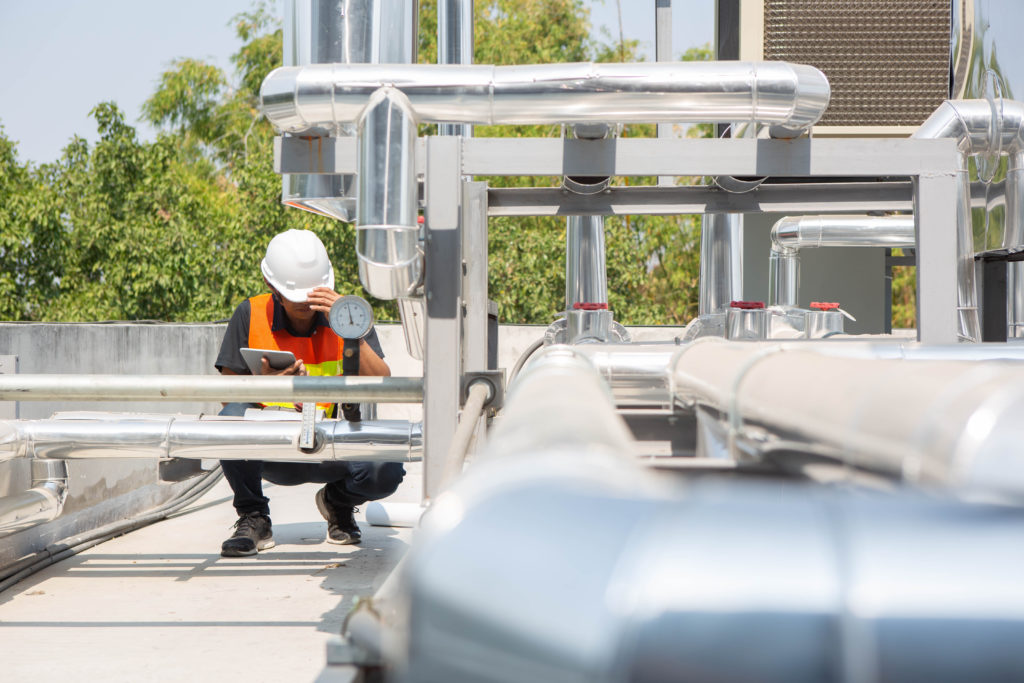Water Treatment Safety 101
Five Hazards to Look Out For
Any type of industrial water treatment will have its share of hazards and safety risks. Water treatment can be complicated and involve a lot of moving parts and dangerous substances and working environments. That said, safety should always be a priority for any business, and in the spirit of safety we’ve compiled a list of some hazards to look out for in the water treatment business. Keep in mind that this list is an overview of potential hazards but will not offer comprehensive safety procedures to follow. Instead, every water treatment facility should have its own safety guidelines and training to equip workers with the skills needed to avoid these hazards as well as others.

-
Chemicals and Gases
This one might be the most obvious but also the most important to be aware of. Water treatment often involves chemical substances, including gases. Chlorine, methane, acids, bleach, and more can all be found where water is being treated. Coming into contact with these chemicals or inhaling the gaseous chemical compounds could lead to some serious medical emergencies. Always be aware of where these chemicals are meant to be, and ensure they are always stored properly when not in use. When handling dangerous materials, always be sure to understand and use the proper personal protective equipment (or PPE) for the job.
-
Height
Most water treatment plants aren’t exactly housed in skyscrapers, but that doesn’t mean there aren’t risks associated with heights and falls. Certain work areas will sometimes require workers to operate at heights that require fall protection. For example, a safety harness may be required to protect against dangerous falls. Additionally, there may be hazards associated with tanks and open water sources at or near ground level. Be sure to always wear non-slip footwear and use handrails where available.
-
Confined Spaces
Much like with heights, workers will sometimes be required to access confined or hazardous spaces. Whether it’s for cleaning sludge or access to a compartment for maintenance, confined spaces can be dangerous. It is important to make sure that an adult person can easily enter and exit the space, as well as make sure that no gases have built up inside the space before entering. Always follow prescribed confined space entry protocols, including any lockout-out tag-out procedures.
-
Exposure
There are several substances in a water treatment plant that are potentially dangerous when a person is exposed to them. UV radiation, for example, can come from germicidal UV lights. Overexposure to this type of radiation can be harmful to the skin or eyes, and proper safety measures such as protective eyewear should be followed when working with this type of equipment. Depending on the substance, other PPE may be required for maximum safety.
-
Machine and Electrical
Water treatment operations often involve the use of heavy machinery, such as pumps or turbines, and maintenance of these systems may require workers to be in proximity to dangerous moving parts or exposed electrical components. Always follow the correct safety procedures when dealing with this type of machinery to avoid electrical shock or injury. Always follow lock-out and tag-out guidelines to make sure all machinery or electrical components are safe to work with before getting close.
Safety should always be of paramount importance within a water treatment facility or any industrial facility for that matter. For that reason, it is important to always know and follow proper safety guidelines. Before starting any job, make sure you know all the procedures in place to be able to do it safely. Err on the side of caution, and if a situation ever feels unsafe, remember that it’s okay to listen to that feeling and reassess or ask a supervisor.
